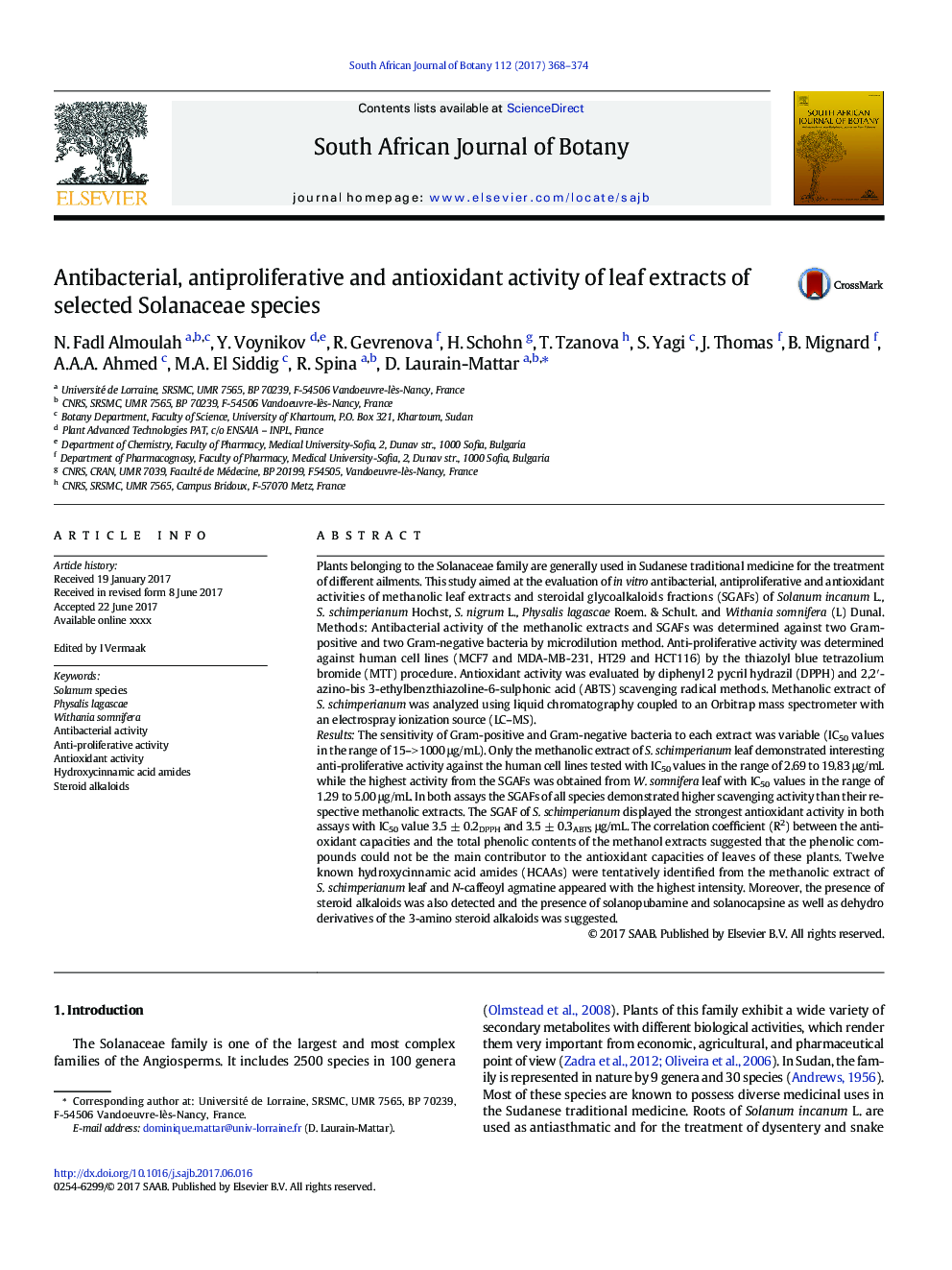| Article ID | Journal | Published Year | Pages | File Type |
|---|---|---|---|---|
| 5763193 | South African Journal of Botany | 2017 | 7 Pages |
Abstract
The sensitivity of Gram-positive and Gram-negative bacteria to each extract was variable (MIC values in the range of 15-> 1000 μg/mL). Only the methanolic extract of S. schimperianum leaf demonstrated interesting anti-proliferative activity against the human cell lines tested with IC50 values in the range of 2.69 to 19.83 μg/mL while the highest activity from the SGAFs was obtained from W. somnifera leaf with IC50 values in the range of 1.29 to 5.00 μg/mL. In both assays the SGAFs of all species demonstrated higher scavenging activity than their respective methanolic extracts. The SGAF of S. schimperianum displayed the strongest antioxidant activity in both assays with IC50 value 3.5 ± 0.2DPPH and 3.5 ± 0.3ABTS μg/mL. The correlation coefficient (R2) between the antioxidant capacities and the total phenolic contents of the methanol extracts suggested that the phenolic compounds could not be the main contributor to the antioxidant capacities of leaves of these plants. Twelve known hydroxycinnamic acid amides (HCAAs) were tentatively identified from the methanolic extract of S. schimperianum leaf and N-caffeoyl agmatine appeared with the highest intensity. Moreover, the presence of steroid alkaloids was also detected and the presence of solanopubamine and solanocapsine as well as dehydro derivatives of the 3-amino steroid alkaloids was suggested.
Keywords
Related Topics
Life Sciences
Agricultural and Biological Sciences
Agronomy and Crop Science
Authors
N. Fadl Almoulah, Y. Voynikov, R. Gevrenova, H. Schohn, T. Tzanova, S. Yagi, J. Thomas, B. Mignard, A.A.A. Ahmed, M.A. El Siddig, R. Spina, D. Laurain-Mattar,
